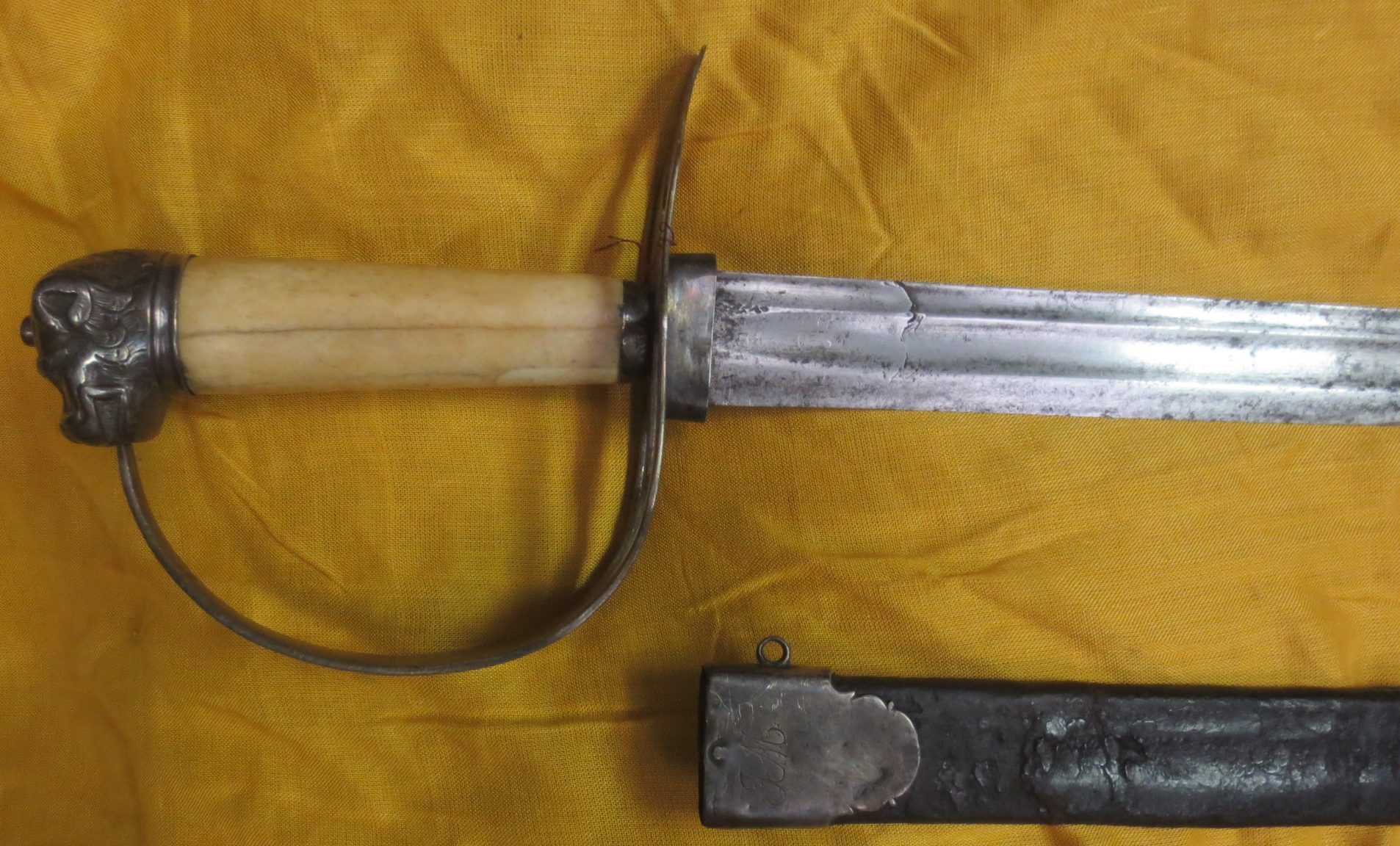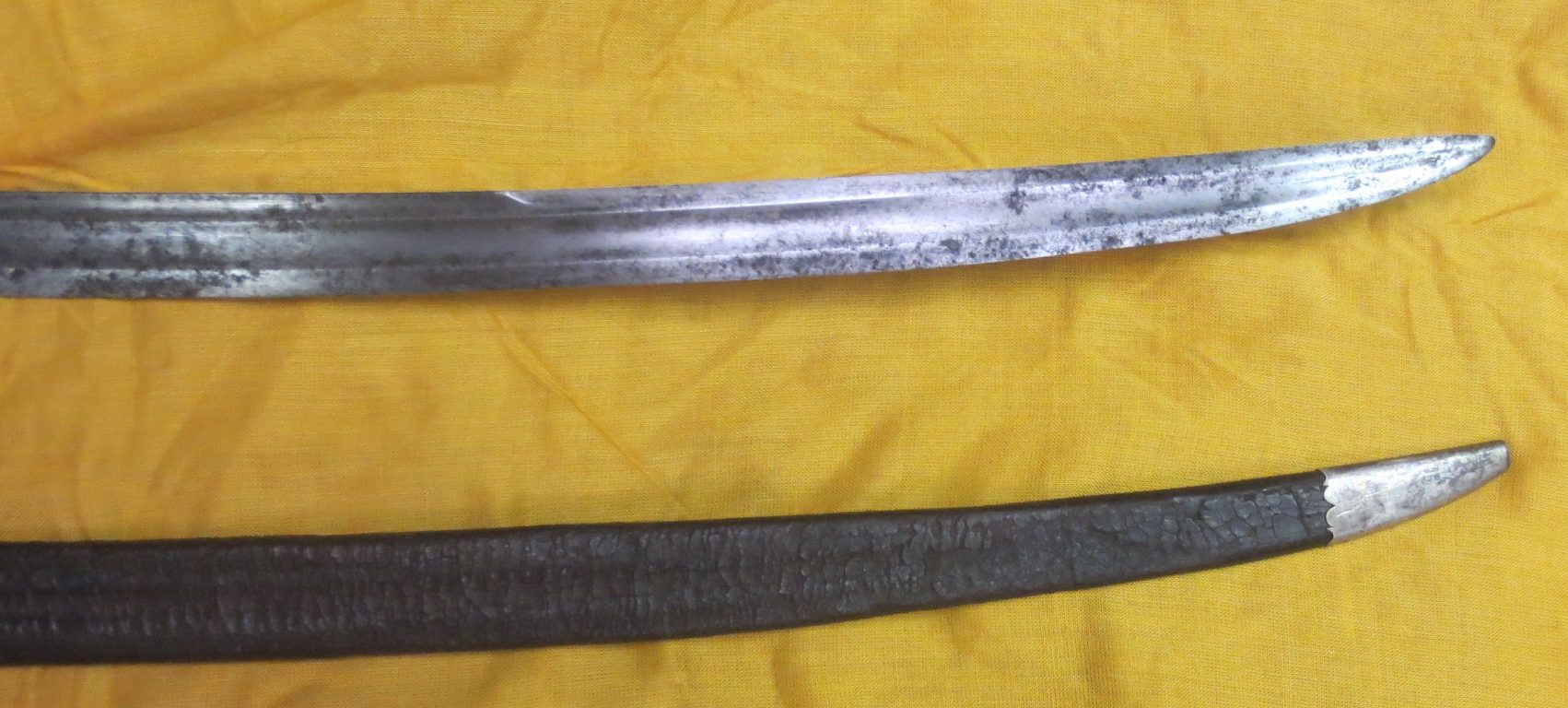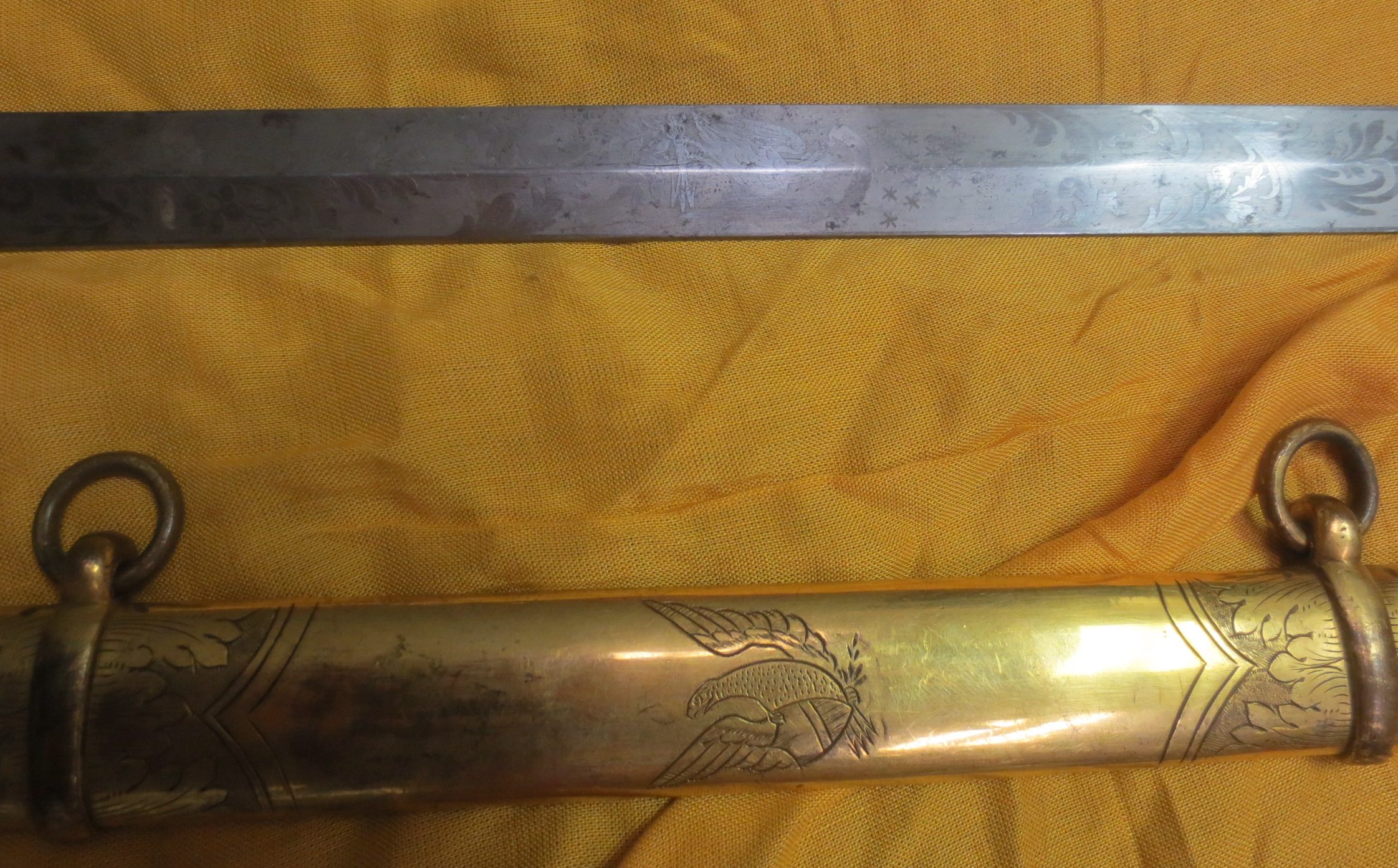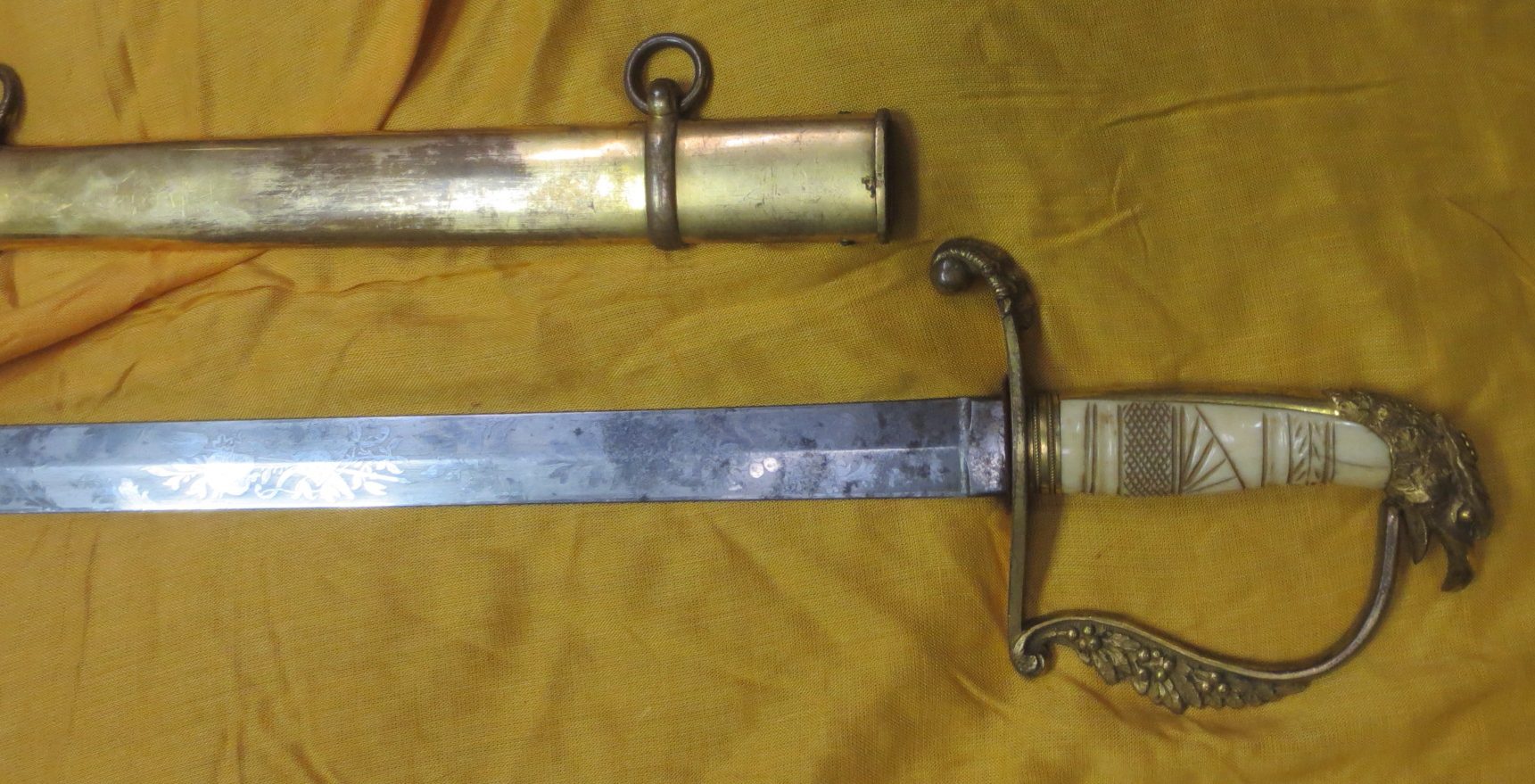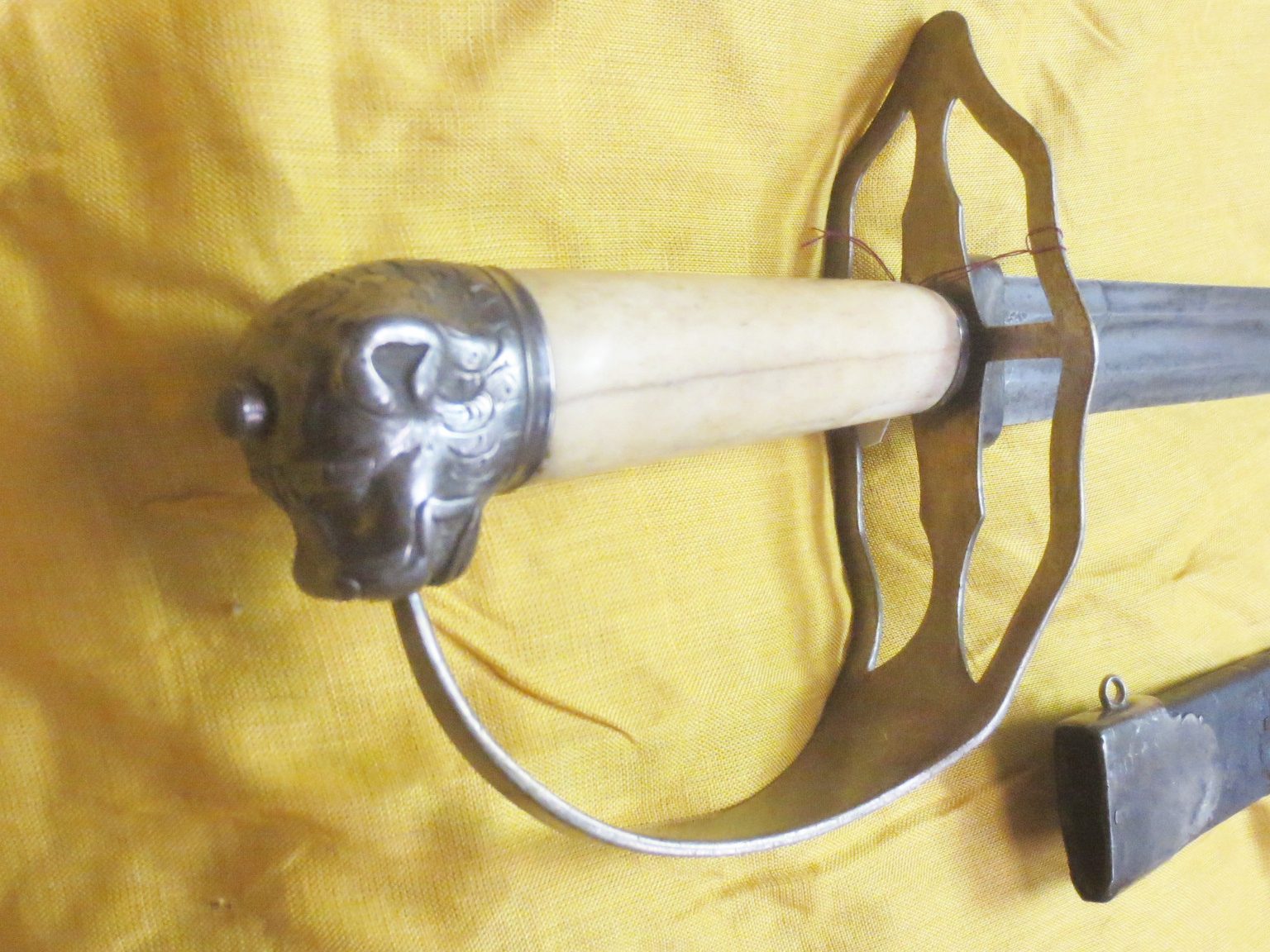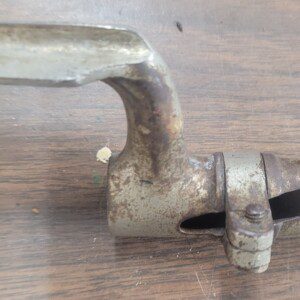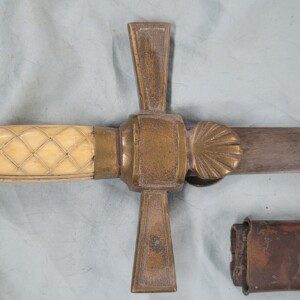Description
One of the finest and rarest Revolutionary War era sword we have seen in many, many decades and once in the famed collection of noted author and collector George Neumann, this beautiful silver lion head officer sword is well crafted and an ultimate rarity even without any firm history. The leather scabbard is silver mounted and the upper mount is engraved “J.M” and according to historical records, once belonged to the noted North Carolina loyalist John Moore! The sword was likely English manufactured but for the American market as it has no maker marks or hallmarks present. It is a true beauty to behold.
John Moore was a Loyalist officer born in Tryon (now Lincoln) County. His father was Moses Moore, a native of Carlisle, England, who, after migrating to Virginia in 1745 and marrying a Miss Winston from Jamestown, settled eight miles west of Lincolnton. Since Tryon County was a frontier area, young Moore journeyed east to the more genteel Granville County when he was old enough to begin his education. On completion of his formal instruction he subsequently returned to Tryon County and acquired, through a series of transactions with his neighbors, extensive landholdings in present-day Lincoln, Gaston and Mecklenburg counties.
Early in the American Revolution Moore declared his allegiance to King George III, a move for which his property was confiscated by the General Assembly on 29 May 1774. In February 1779, when leading a group of Loyalists to Georgia, he was attacked and defeated at Kettle Creek by Colonel Andrew Pickens. After narrowly escaping to the British forces in that vicinity, Moore was said to have aided in the defense of Savannah. December 1779 found him with British troops near Moseley’s Ferry on the Ogeechee River.
On 7 June 1780 Moore, referring to himself as a lieutenant colonel in Colonel John Hamilton’s corps of North Carolina Loyalists, arrived back at his father’s house. On 10 June he met in the woods on Indian Creek with approximately forty Tories. After recounting Lord Cornwallis’s siege and capture of Charles Town, Moore instructed the group to “hold themselves in readiness,” promising that as soon as the country could provide subsistence, Cornwallis would march in. On hearing that a small Whig force led by Major Joseph McDowell was nearby, Moore appointed 13 June 1780 as the day for all Loyalists to meet at Ramsour’s Mill. On the designated day some 200 men, including Major Nicholas Welch, met Moore. By the twentieth the ranks had swelled to nearly 1,300. Though nearly that many men were already under Moore’s command at Ramsour’s Mill, almost one-fourth of them were unarmed.
Late in the evening of 20 June 1780, General Griffith Rutherford’s Whig force of four hundred men attacked the encamped Tories. The Tories, wearing green pine sprigs in their hats, were such easy targets for the Whigs (who identified themselves by white clumps of paper in their caps) that soon after the first shots were fired Rutherford’s force overran the mill. But as soon as the action began, the unarmed Tories fled to a small creek behind the mill. Realizing the battle was lost, Moore and Welch joined them and planned their escape. Under the guise of a white flag of truce (asking for a halt in the fighting to tend to the wounded and bury the dead), Moore and Welch ordered their troops to escape as fast as they could.
Thus surviving another narrow escape, Moore and thirty men joined the British forces in Camden, S.C. In Camden, his force lost three men killed and fourteen wounded in General Horatio Gates’s defeat. However, Moore probably did not participate in this action for he was, at this time, threatened with court-martial for disobeying orders in attempting to embody the Loyalists “without order or caution” before the time designated by Cornwallis. Though never brought to trial, he was treated with disrespect by British officers and still under threat of court-martial.
John Moore had his third narrow escape at the Battle of King’s Mountain. Afterwards he joined Captain Thomas Water’s Tories who were defeated by Colonel William Washington at Hammond’s Store, S.C., on 28 December 1780. Legend claims that Moore sailed to Carlisle, England, and was never heard from again. A more reliable source is probably the statement of a North Carolina Loyalist—published in the Political Magazine of London (April 1783)—that Moore was captured by Colonel Wade Hampton near the Wateree and hanged.
